In every industry, it’s important to know the “speak”. It’s the only way you’ll ensure you get the service you desire.
In the piano industry, for instance, you’ll often hear the term “piano restoration” used quite a bit. But what you may not know is that “piano restoration” can mean a variety of things, depending on the company you’re trying to do business with. The more you know about this process, the greater understanding you’ll have when trying to get the service you desire.
Let’s say you’re trying to buy a used piano and the owner tells you it’s been reconditioned. What does that mean? Of maybe a dealer offers repair service? What does that entail?
Keep in mind that there aren’t clear definitions of the concept of piano restoration. But in general, you’ll find three terms used frequently:
Repair
Repair to a piano usually means fixing isolated problems. It might be a key is broken or a string is missing. There aren’t time-consuming fixes that will keep your piano away for weeks. And in most cases, it’s an isolated issue that can be fixed quickly. It doesn’t involve upgrading the condition of the piano as much as it means fixing a specific problem.
Reconditioning
Reconditioning a piano refers to bringing a piano back to good working condition while leaving the piano intact as much as possible. Instead of replacing parts, they will be reconditioned so they work at their best. Hammers might be resurfaced rather than replaced. Strings will be retwisted to improve their tone. While replacement will be made as a last resort, all items will try and be fixed to keep the piano in its original condition.
Rebuilding
Of the three levels of restoration, this is the most complicated and time consuming. Rebuilding means bringing the piano back to factory-new condition, no matter what it takes. And in most cases, the work is extensive.
It can mean replacing hammers and strings. It can mean replacing the soundboard in the action. It can mean replacing damper felts and restringing strings. It all depends on the needs of the instrument and the amount of money available to be spent on the process. It also depends on the worth of the piano – rebuilding it beyond its original value doesn’t make sense.
Whether you’re buying a used piano, or considering having work performed on your existing piano, knowing the right terms can help you decide the best approach to piano restoration.
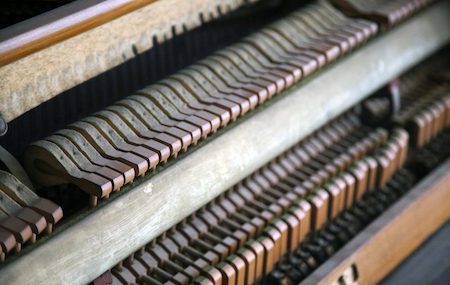
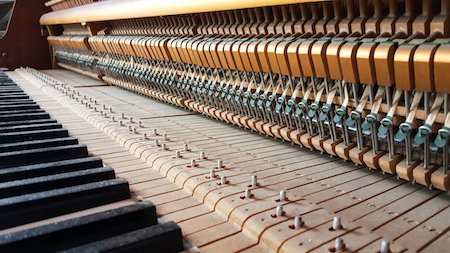
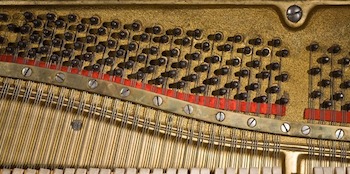


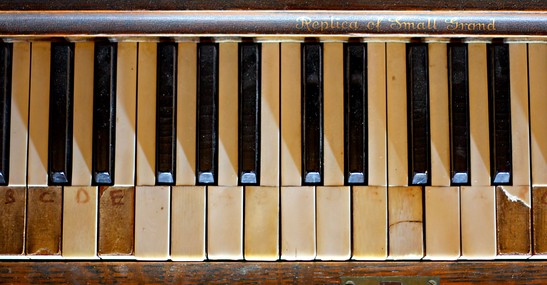
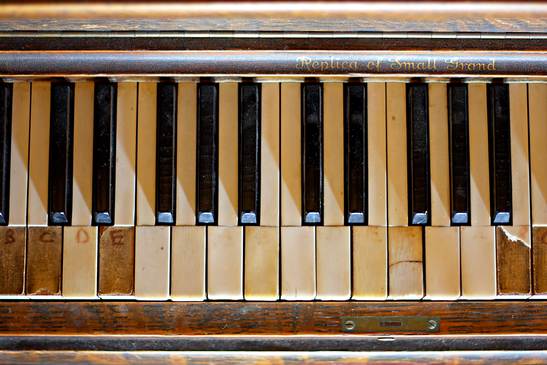


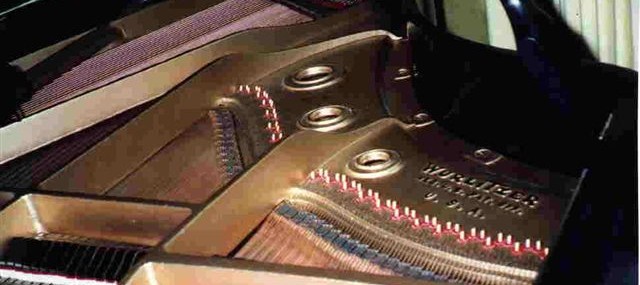
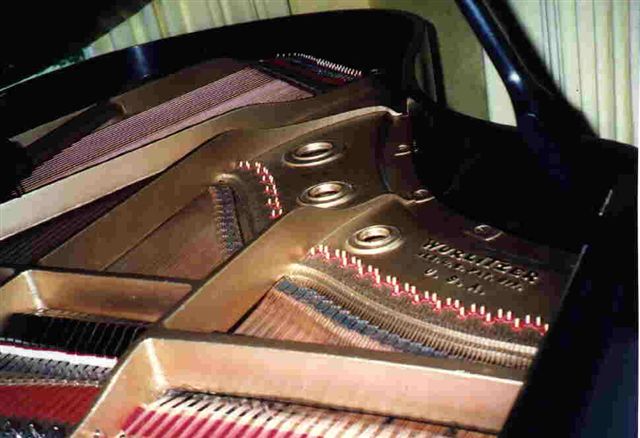 In the piano restoration world, the term “restoration” means a lot of things to different people. And just like every industry, “reputable” isn’t always in a persons vocabulary either, even though they are promoting themselves as a piano servicing company.
In the piano restoration world, the term “restoration” means a lot of things to different people. And just like every industry, “reputable” isn’t always in a persons vocabulary either, even though they are promoting themselves as a piano servicing company.
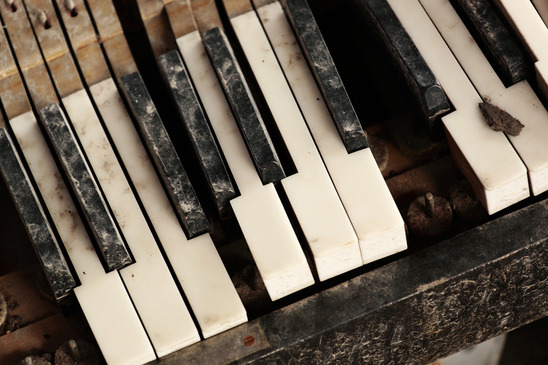 Piano restoration involves two things: the rebuilding of the internal parts as well as cosmetically enhancing the outside. The term “restored” refers to professional internal and external restoration and rebuilding. In some cases a previous owner may have taken on the project themselves, cosmetically enhancing the look. This, however, isn’t restoration. Restoration means focusing in on making the inside and outside look and sound its best.
Piano restoration involves two things: the rebuilding of the internal parts as well as cosmetically enhancing the outside. The term “restored” refers to professional internal and external restoration and rebuilding. In some cases a previous owner may have taken on the project themselves, cosmetically enhancing the look. This, however, isn’t restoration. Restoration means focusing in on making the inside and outside look and sound its best.
